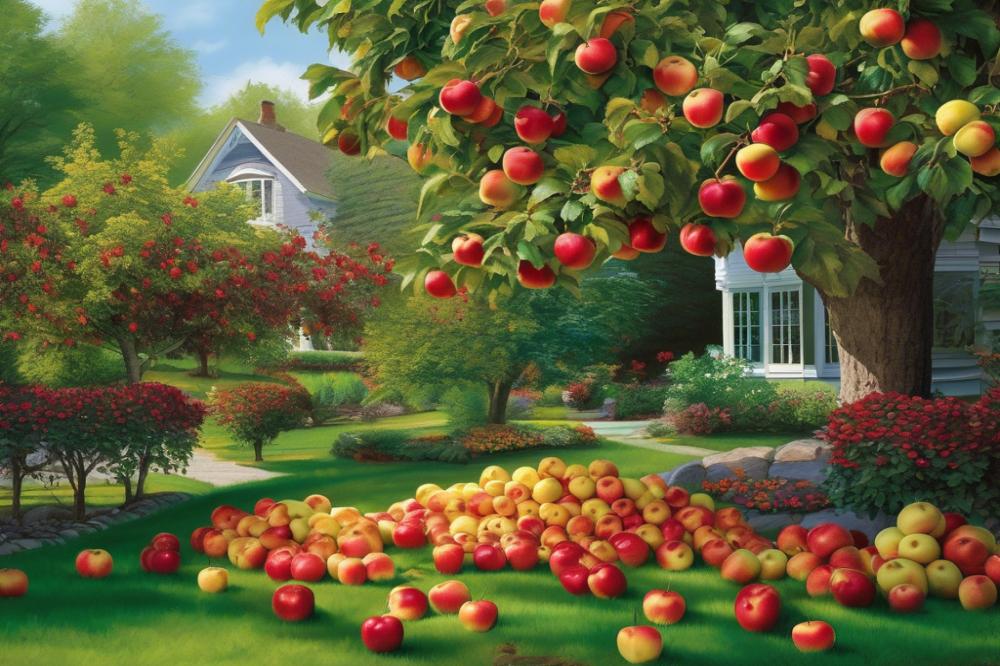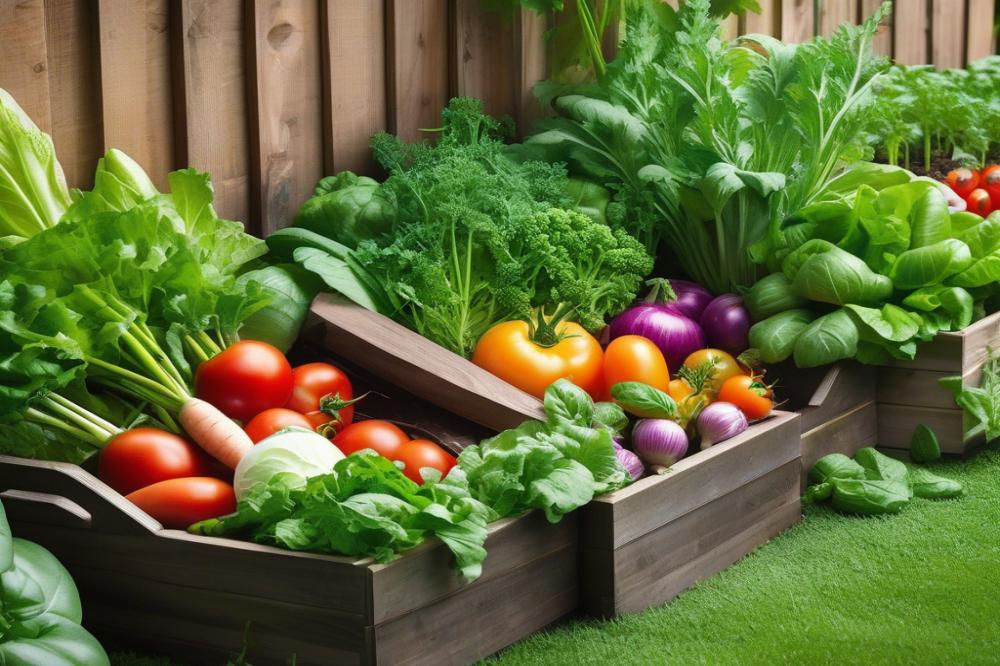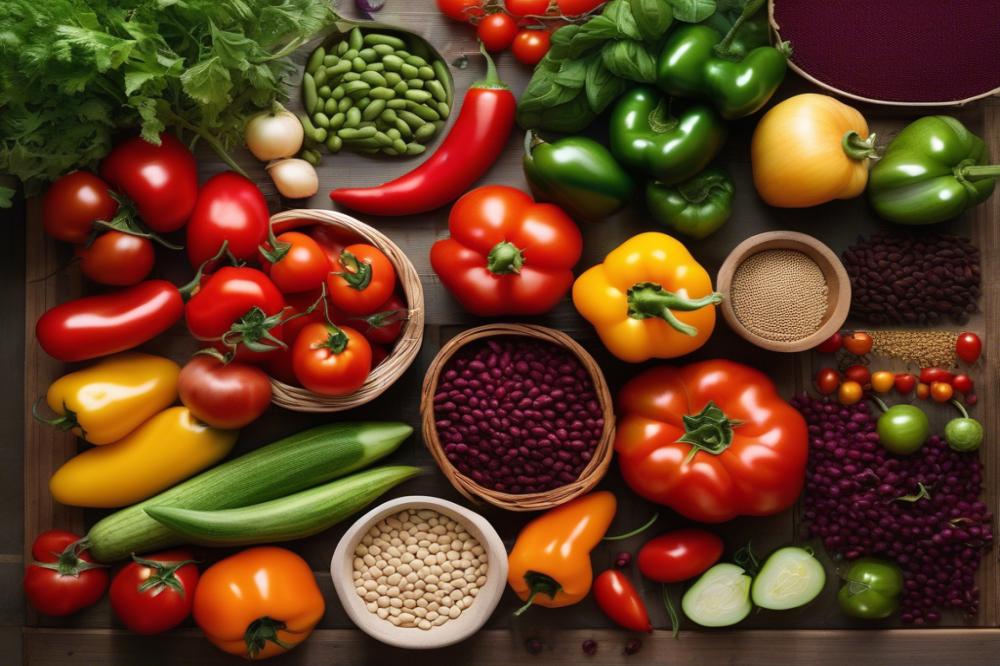Understanding Winesap Apples
Gardening enthusiasts often seek out unique apple varieties for their home orchards. Winesap Apples are one such heirloom variety that captivates many. Known for their rich flavor and crisp texture, they have earned a special place among organic fruit growers. This apple variety does not just thrive in gardens; it adds a classic essence to any orchard.
Growing organic apples has gained importance due to increased awareness about sustainable practices. With more people seeking chemical-free produce, cultivating these trees aligns well with eco-friendly gardening goals. Additionally, fruit gardening provides a rewarding way to connect with nature. By planting an apple tree, you not only contribute to your health but also promote biodiversity.
As this article unfolds, it will cover essential aspects of apple cultivation. Key topics will include Winesap apple care, effective pest management, and apple harvest techniques. Readers can expect practical tips and innovative wine sap recipes for enjoying these delightful fruits. Exploring various apple varieties, especially the Winesap, stands to benefit both novice and experienced gardeners.
Understanding Winesap Apples

The Winesap apple is known for its rich flavor and crisp texture. This heirloom variety offers a balance of sweetness and tartness. The flesh is firm, making it great for eating raw or using in various recipes. Their dark red skin gives them a striking appearance, which adds to their appeal in fruit gardening.
Historically, this apple has roots dating back to the 19th century. Originating in the United States, it has been cherished by apple lovers for generations. Many consider it a classic choice among heirloom apples. Their significance goes beyond taste; they represent a connection to farming in earlier times.
Culinary uses abound with this variety. Many people enjoy Winesap apples in pies and crisps. Their firm texture holds up well during baking, resulting in delicious desserts. Additionally, these apples are great for making cider. The unique flavor profile blends well with other varieties in cider making, producing a balanced drink.
When it comes to apple care, understanding proper practices is essential. Growers should focus on pest management to protect their crops. Apple tree planting involves selecting the right location with good sunlight and adequate space. Organic apples are becoming more popular, and Winesap apples can be grown without chemical pesticides. This approach not only promotes health but also enhances taste.
The apple harvest typically occurs in late fall, when the fruit has ripened fully. Harvesting techniques must be gentle to prevent bruising. Making wine sap recipes allows the flavors of this variety to shine. From sauces to salads, there are plenty of creative ways to use these apples. Different apple varieties can complement each other in various dishes.
In summary, Winesap apples are a delightful addition to any orchard. Their historical significance and versatility in cooking make them a favorite among many. Proper techniques in apple cultivation and care can lead to a successful harvest year after year.
Apple Tree Planting

Planting Winesap apple trees requires attention to detail to thrive in your garden. First, soil quality is crucial for apple cultivation. Aim for slightly acidic, well-draining soil. A pH level between 6.0 and 6.8 works best. Adding organic matter, like compost, improves soil structure and fertility. Regular soil amendments lead to healthier trees.
Choosing the right site is another important factor. Select a location with full sunlight. Apples need at least six hours of sun each day. Ensure that the area is protected from strong winds. Fencing or nearby trees can help shield young trees from harsh weather conditions. Look for a space that allows for good airflow to reduce disease risk.
Recommended Planting Times
Timing plays a significant role in success. In most climates, the best months for planting are early spring or fall. This gives roots time to establish before extreme weather conditions. Always check local frost dates before planting. Timing will also influence your apple harvest later on.
Planting Techniques
Utilize proper planting techniques for optimal growth. Start by digging a hole twice the width of the tree’s root ball. Make sure it is deep enough to allow roots to spread easily. Place the tree in the center of the hole, making sure the graft union is above soil level. Backfill with soil, gently tamping down to eliminate air pockets.
Watering immediately after planting is essential. It helps settle the soil and provides moisture. Continue with regular watering, especially during the first growing season. Maintaining consistent moisture ensures healthy development. Avoid waterlogging, as it can harm roots.
Winesap Apple Care
Winesap apple care involves regular monitoring for pests and diseases. Careful pest management will keep your trees healthy. Look for signs of common pests like aphids or codling moths. Using organic methods is often a safe choice for home gardeners. Simple solutions include insecticidal soap or neem oil.
Pruning your apple trees annually promotes better air circulation and sunlight penetration. This practice also encourages new growth and improves fruit quality. Always prune during the dormant season to minimize stress on the tree. Over time, healthy pruning habits support the vitality of heirloom apples.
Finally, enjoy the process of fruit gardening. Watching your trees grow and understanding their needs brings satisfaction. With patience and care, you can look forward to delicious wine sap recipes for your home kitchen.
Winesap Apple Care

Caring for Winesap apples requires attention to several key areas. Start with proper watering. Trees need consistent moisture, especially during dry spells. Water deeply once a week in the absence of rain. This helps the roots grow deeper and stronger.
Fertilizing is another important aspect of apple cultivation. Trees benefit from balanced nutrients. An organic fertilizer made from compost or well-rotted manure works well. Apply it in early spring before new growth begins, and follow up with a second application in late summer.
Pruning for Health and Productivity
Pruning promotes healthy growth and enhances fruit production. Aim to prune each year in late winter or early spring. Remove dead or diseased branches first. Then focus on thinning out crowded areas to allow sunlight and air to reach all parts of the tree. This practice improves health and aids pest management.
Keep an eye on the overall shape of the tree. Winesap trees develop an open center, which helps improve airflow and light penetration. This also supports better fruit development during the apple harvest.
Sustainable Practices
Many gardeners prefer organic practices for growing apples. This method reduces chemical usage and promotes environmental health. Incorporate companion planting techniques to deter pests. For example, planting marigolds near apple trees can repel harmful insects.
Another method is to introduce beneficial insects to your garden. Ladybugs and lacewings can help control pest populations without resorting to chemicals. Using mulch around the base of the tree retains moisture and suppresses weeds. Organic mulches like straw or wood chips also enrich the soil.
Engaging in Fruit Gardening
Remember, growing heirloom apples like the Winesap can be rewarding. It connects you to the past and supports genetic diversity in our food supply. Start with healthy apple tree planting, choosing disease-resistant varieties if you can. Ensure good spacing between trees for optimal growth and air circulation.
During the growing season, monitor the trees closely. Look for signs of pests or diseases and take action quickly. This can include removing affected leaves or using organic sprays when necessary. Keeping your garden healthy contributes to a bountiful apple harvest.
Lastly, don’t forget to explore wine sap recipes once your apples are ready. Freshly picked varieties can make delicious pies, ciders, and sauces. Enjoy the fruits of your labor while appreciating the efforts that go into maintaining your apple trees.
Pest Management for Winesap Apples
Identifying common pests and diseases is crucial in apple cultivation. Many apple varieties face attacks from various insects and diseases that can damage the trees and fruit. Aphids, for example, are small insects that suck sap from leaves. They can lead to wilting and reduced growth. Codling moths are another major issue and they often burrow into the apples, causing significant loss.
Fungal diseases like apple scab and powdery mildew also threaten these trees. Apple scab can create dark spots on leaves, while powdery mildew makes them look dusty and white. Both diseases can weaken trees and reduce the quality of fruit.
For effective pest management, consider organic approaches. Introducing beneficial insects, such as ladybugs, can help control aphid populations naturally. Planting companion flowers like marigolds near apple trees attracts these helpful bugs. Additionally, using neem oil can deter a range of pests while remaining safe for the environment. This oil works by disrupting the life cycle of insects and helps in managing unwanted visitors.
Regular monitoring of trees is vital. Look under leaves and check for any signs of distress or damage. Early detection allows for prompt action, which is key for maintaining apple tree health. You can also practice crop rotation to reduce pests and diseases over time. Rotating where you plant can disrupt the life cycles of persistent pests.
Consider removing any fallen fruits or debris from the ground. This cleanup can prevent pests from overwintering and reduces the chance of infection. Healthy soil is essential for Winesap apple care. Healthy trees are better able to withstand pests and diseases. Applying organic compost annually can improve soil health and support robust growth.
If you’re looking to harvest organic apples, keep a sharp eye on potential threats. Sometimes, using diatomaceous earth can act as a barrier against crawling insects. Sprinkle it around the base of trees to create a protective layer. This method safely protects your heirloom apples and other varieties.
For those passionate about fruit gardening, patience is key. Organic pest management requires diligence but rewards you with healthy fruits. Explore wine sap recipes that create unique flavors from your homemade harvest. With the right care and strategies, you’ll enjoy bountiful apple harvests and the satisfaction of growing your own apples organically.
Apple Harvest Tips
Harvesting Winesap apples requires specific timing and techniques for the best results. Knowing when to pick is crucial. A good rule of thumb is to wait until late September to early October. This time frame usually marks peak flavor and ripeness.
Signs of ripeness are visible. Look for a deep red color on the skin and a glossy finish. Press your thumb gently on the apple. If it yields slightly, it’s ready to be picked. Additionally, consider tasting one. A perfectly ripe apple will have a balanced sweetness and acidity.
Handling is just as important as timing. Use a gentle touch when picking. Avoid pulling the fruit off the branch. Instead, twist the apple slightly to detach it. This technique reduces damage to the tree and the fruit. If you notice any bruised or damaged apples, set them aside for immediate use, perhaps in unique wine sap recipes.
Post-harvest practices affect the longevity of your apples. Store them in a cool, dark place, ideally at around 30 to 35 degrees Fahrenheit. To maintain their quality, separate the apples to prevent bruising. Keep damaged apples away from healthy ones. That way, pests and mold won’t spoil your crop.
With apple cultivation, proper care leads to great rewards. For effective pest management, check your apples regularly. Look for signs of insects or disease and act quickly. Incorporating these practices will help you harvest premium heirloom apples.
In summary, timing your apple harvest and handling techniques are key to enjoying your organic apples for months. As you embrace fruit gardening, remember that this process takes patience and care. Adapting these methods will elevate your experience with this beloved apple variety.
Using Winesap Apples: Recipes and More
Winesap apples are perfect for a variety of culinary uses. Start with desserts. Pie made with heirloom apples like these provides a delightful flavor that’s hard to beat. Slicing them thinly and mixing with sugar, cinnamon, and a touch of butter creates a filling that’s both sweet and slightly tart.
Crisps are another favorite. Simply layer sliced apples in a baking dish and top them with a mix of oats, flour, and brown sugar. Bake until golden, and enjoy it warm, perhaps with a scoop of vanilla ice cream. Another creative option is an apple cake, which combines butter and sugar for a rich treat. Dicing the fruit and folding it into the batter ensures each bite bursts with flavor.
Sauces made from these apples can elevate many dishes. A traditional apple sauce can be prepared by simmering peeled and chopped varieties with cinnamon and a splash of lemon juice. This sweet condiment works well with meats. It also adds a fruity twist to breakfast dishes.
Cider is a great way to use large quantities during apple harvest time. Pressing Winesap apples can yield a wonderfully fresh beverage. Don’t forget to include a variety of apple varieties for depth of flavor. Mixing in some more tart apples can balance the sweetness.
When considering snack ideas, try caramel apples. Dip them in melted caramel for an easy treat. These are particularly popular around Halloween. For a fresher option, slice the apples and serve them with peanut butter or cheese. This provides a satisfying crunch and boosts the healthiness of your snacks.
Apple cultivation requires careful attention to the harvest season. Ensuring they are picked at the right time is crucial. Winesaps develop their full flavor when allowed to ripen. Once harvested, store them in a cool, dark place to help maintain their crisp texture.
For those focused on organic apples, maintaining your orchard involves thoughtful pest management. Look for natural predators or organic sprays to protect your trees without harming the environment. Regularly check for diseases and take early action when necessary. Proper care will keep your trees healthy and your meals delicious.
These apples lend themselves well to many diverse dishes. From savory to sweet, each recipe highlights their robust flavor. Whether you’re baking, cooking, or preserving, there’s no shortage of creative ways to enjoy the richness of this beautiful fruit.
Final Thoughts on Growing and Using Winesap Apples
The many benefits of cultivating Winesap apples are indeed worth considering. This variety offers a rich flavor profile, perfect for fresh eating or baking. Growing your own fruit can be quite rewarding. It allows you to enjoy the delicious taste right from your garden. Families often find satisfaction in harvesting apples together. The experience of picking your fruit creates lasting memories.
Embarking on apple cultivation can seem daunting at first. However, with some basic knowledge and a bit of patience, the rewards can be plentiful. Winesap apple care is important for those who choose to grow this special type of apple. Regular attention to pests and disease can make a real difference in your harvest.
I encourage everyone to give it a try. You may find joy in watching your trees grow and eventually bear fruit. Each season brings new excitement in the cycle of life. Beyond the Winesap, many other apple varieties await your exploration. A diverse garden can provide a range of flavors and benefits.
As you contemplate your gardening goals, consider incorporating sustainable practices. These methods not only support the environment but also lead to healthier plants. Growing your own fruit can connect you more deeply with the natural world. Enjoy the journey of cultivation, and make your garden a place of growth and discovery.



